In light of Coleco’s astounding success, their sprawling factory and warehouse complex in Amsterdam, NY is a hive of activity. Things get so intense, in fact, that safety concerns over the deteriorating conditions of freight elevators in Building 8 are ignored. In order to get around damaged doors and gates, safety interlocks are bypassed to allow the elevators to move while the doors are not fully closed. On February 17, 1984, Coleco employee Blaine Lamson is on the third floor of Building 8, attempting to load pallets onto elevator #12 with a forklift truck. Due to some jury-rigging with the elevator’s control lever, the elevator begins to rise with the forklift half inside, and Mr. Lamson is crushed to death. A $10,000 civil penalty is eventually levied against Coleco in May of 1984 by the Occupational Safety and Health Review Commission, with the company found to have been willfully negligent in ensuring the safety of their employees.
“I must have this machine!”
In 1982 my Atari VCS is three years old, and while I’m enjoying the new games being produced for the system by Activision, the horrible Pac-Man translation from Atari really starts me thinking it might be time to put the old beast to pasture and move on to a better system. I look at the Intellivision as a possible upgrade, but the games really don’t appeal to me, along with that crazy control disc. That year my family and I take our annual trip to the Canadian National Exhibition in Toronto, and coming through the Dufferin Street gates I notice a large crowd gathered around a big geoscopic dome. From within, the magical sound of electronic boops and beeps drifts out of the entryway and plays its siren song in my young ears, and as I enter a girl hands me a button that says “Try ColecoVision“. “What the heck is a ColecoVision?” I wonder, and the answer is like a slap in the face when I look around inside. Amid smaller displays with Intellivisions and VCSes crying to be heard looms a huge set-up with a line of people standing in front of a bank of monitors playing what looks from a distance like the arcade version of Donkey Kong. As I approach, I’m amazed to see that this game is being played on a home system! The ColecoVision! I stand in the large queue and wait my turn, inching up the line, anxiously shifting from foot to foot like I have a full bladder, eternities ticking away as I watch those other lucky bastards play the game. Finally, I’m up against the rope separating me from the play area, and miracle! Someone who must have been playing for at least three hours is led away by an attendant and I fly to the monitor, a large popping sound echoing through the place as the air rushes in to fill the vacuum where I had been standing microseconds before. I look at the machine secured to its pedestal, large and black and imposing. I pick up the controller, surprised by the size and heft, and press the start key. There’s Mario! He looks like Mario! There’s the gorilla Kong! He looks like Kong! I don’t even notice deficiencies like the reverse positioning of Kong or the lack of detail on the barrels or the missing ‘mudpie’ level. For once, the pitch phrase “The Arcade in Your Home!” doesn’t come off like so much hyperbole. As my thumb strains against the stiff mushroom controller, guiding Mario over barrels and gaps and rivets, an epiphany washes over me like rain: I MUST HAVE THIS MACHINE! Then suddenly, Oh No! The screen goes blank! A hand on my shoulder! Reality snaps back as I find myself back in Toronto, Ontario, being led out of the play area to the popping sound of another vacuum being filled behind me. The 5-minute play interval, now seeming like 3 seconds instead of 3 hours, is over. I get in line three more times, and each session at the ColecoVision is as wondrous as the last. I then wander around the rest of the displays, check out Lost Luggage for the VCS, play Mattel’s Downhill Skiing, …but even the graphics of the Intellivision seem like images chiseled onto a stone tablet compared to the Coleco. And the VCS? Pfffft. What had been cutting edge a couple years ago was now hopelessly antiquated. That Christmas, I got my ColecoVision.
Filling the Hole: Expanding ColecoVision
Expandability is what Coleco promised, and they keep to their word with the release of two hardware add-ons in 1982. Expansion Module #1 is the Atari 2600 converter, the first such hybridizing device for a home console, selling for about $60 MSRP. It allows users to plug in the hundreds of cartridges available for Atari’s system and play the games on the ColecoVision. Scheduled for release in August, then bumped to October, 150,000 converters are sold within the first three months. Eventually, however, it becomes apparent that due to slight differences between the original cartridge slot on the 2600 and the one on the expansion module, some game cartridges for the Atari system to not make full contact when inserted. Starpath’s Supercharger cartridge adapter is also a victim of this discrepancy, although the company eventually includes an extender with their unit to make it fit Coleco’s adapter.
Courtroom Games: Atari v. Coleco
Along with the Atari converter, in 1983 Coleco shamelessly comes out with a stand-alone VCS/2600 clone, priced at around $100 and called Gemini. It does everything the 2600 can do, with the added touch of combination joystick/paddle controllers. Coleco helpfully packages their own 2600 version of Donkey Kong with the clone, along with their adaptation of Exidy coin-op Mousetrap. In the wake of the announcements of these two hardware releases comes the inevitable flurry of litigation. It starts in late 1982, with a $350 million lawsuit from Atari, filed with the Eastern Division of the Northern District Court of Illinois, in Chicago. The charge is infringement by Coleco of two Atari patents: US 4112422A was filed back in 1976 by Steve Mayer and Ron Milner, during the development of the VCS, titled Method and apparatus for generating moving objects on a video display screen. To keep things brief, it deals with the method of how the VCS uses a beam to draw images on a screen, controlled by a microprocessor, with the image data read from system ROM which receives it from the RAM of a game cartridge. The second patent, filed in 1982, deals with how the VCS produces sound effects. Atari also includes various accusations of deception in Coleco’s marketing of the expansion module, as well as describing Expansion Module #1 and the Gemini as a mere repackaging of the VCS hardware. Or as Atari chairman Ray Kassar describes it, “…merely a thinly disguised copy of Atari’s VCS unit.” And to round out the litany of Atari complaints, they accuse Coleco of confusing the public with prominent referrals to trademarked Atari games in their advertising.
Coleco files a countersuit in the same court for $550 million, arguing that Atari had produced games based on circuitry referred to in the Mayer/Milner patent a full year before filing, proving in their mind that the company knew the technical obviousness of the design. They also claim that Atari is infringing on American anti-trust laws by using various strong-arm tactics to maintain a monopoly in the video game market. Accusations such as patent abuse and threats to game distributors who carry competing products to Atari are mentioned. On March 23, 1983, the two companies propose a settlement dealing with all issues raised, with the case formally closing four days later. The settlement requires that Coleco pays royalties to Atari on every Converter and Gemini sold as a licensee of Atari’s technology. Despite this legal rigamarole, there is also an adapter planned to allow the ColecoVision to play Intellivision cartridges, but it’s doubtful at that point whether Mattel would put up such a struggle at having a company produce another purchase path for their software. At any rate, while reports of the device coming out in early 1984 are floated, the Intellivision adapter never makes it to store shelves.
The second module is the Expansion Module #2 driving controller, consisting of a steering wheel and foot pedal, and is run off of C-Cell batteries or the separately purchased Battery Eliminator from Coleco. Packed in with the driving controller is a translation of Sega’s arcade driving game Turbo. The $60 hardware is required equipment in order to play coin-op conversions of Bump ‘N Jump, Destructor and TV tie-in game Dukes of Hazzard. The module plugs into joystick port #1, and a controller in the other port is used as a gear shift.
Click button to play Bump ‘n’ Jump on the ColecoVision. Hit Tab after loading to choose controls
Other additional control devices are also introduced, such as the complicated Super Action Controllers, with the Super Action Baseball cartridge included with them. These enlarged controllers feature four colour-coded trigger buttons conveniently placed where your fingers can rest upon them, as well as a 12-key keypad, a large joystick and speed roller spinners located on the top face. Early prototypes actually featured a force-feedback system, but such a farsighted option is eventually costed out of the devices before their release in September of 1983. Other peripherals abound, such as the Roller Controller, sold along with Coleco’s port of the 1982 shooting gallery arcade game Slither, by GDI. Another interesting device is the Kid Vid Voice Module, sold by Coleco in 1983, also known as the Sound 1 Voice Module in Canada. The technology behind the device is developed by none other than Ralph Baer, creator of the Odyssey for Magnavox, the first home video game. Coleco redesigns Baer’s invention into a device for their 2600 clone Gemini, moving from an original prototype into something resembling nothing more than a regular black tape recorder. The Kid Vid uses data on one track of a tape cassette to drive the audio on the other track, providing recorded speech, sound effects and music in synchronicity with a video game played on either the Gemini or an actual Atari 2600. Released in 1983 during troubled times at Coleco, only two game packages are made available for the Kid Vid: Smurfs Save the Day, and a game featuring the Berenstain Bears, packed in with the device.














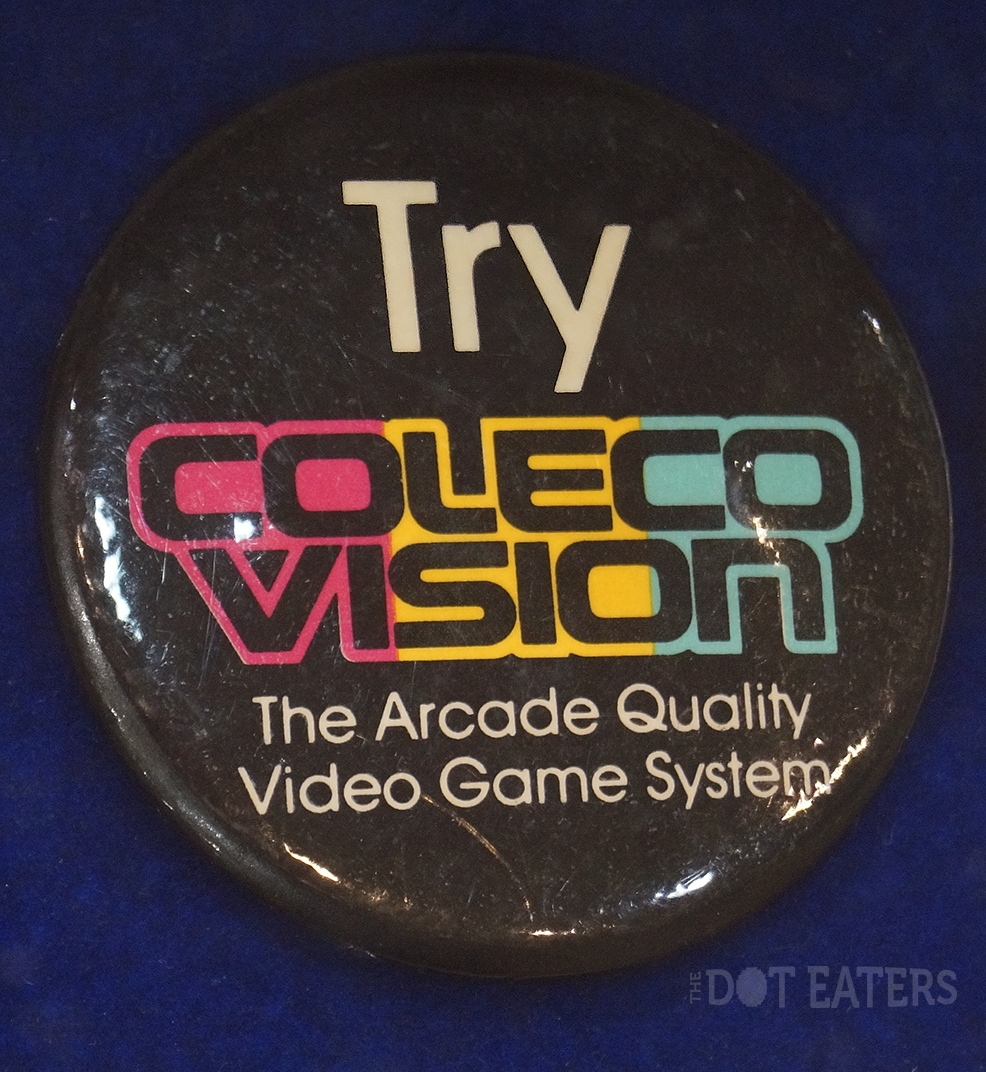


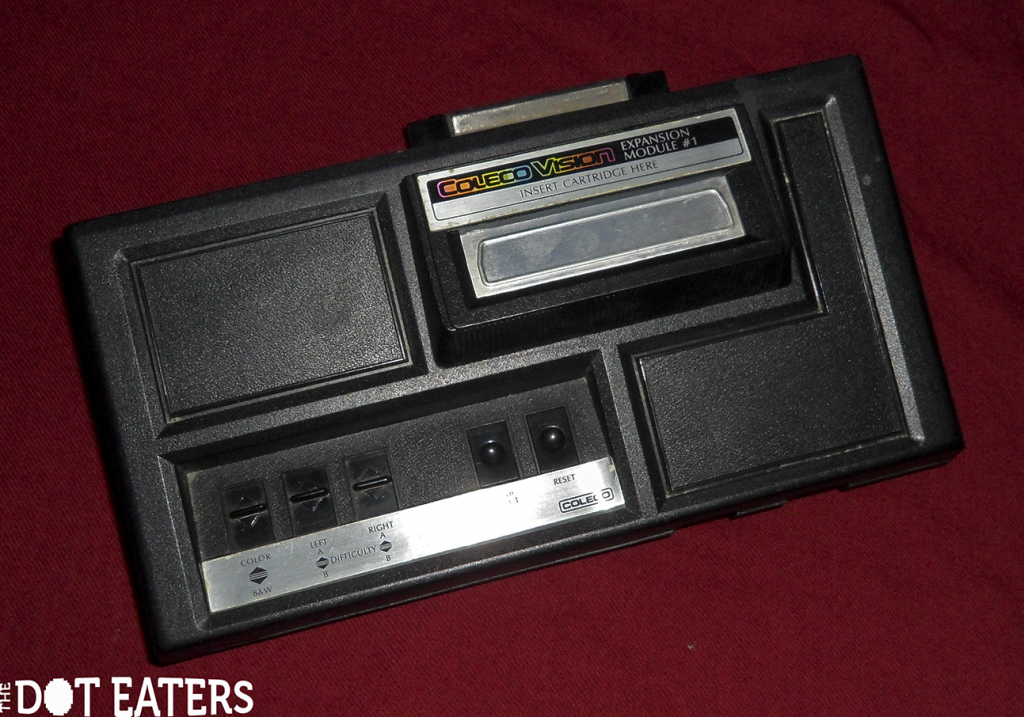
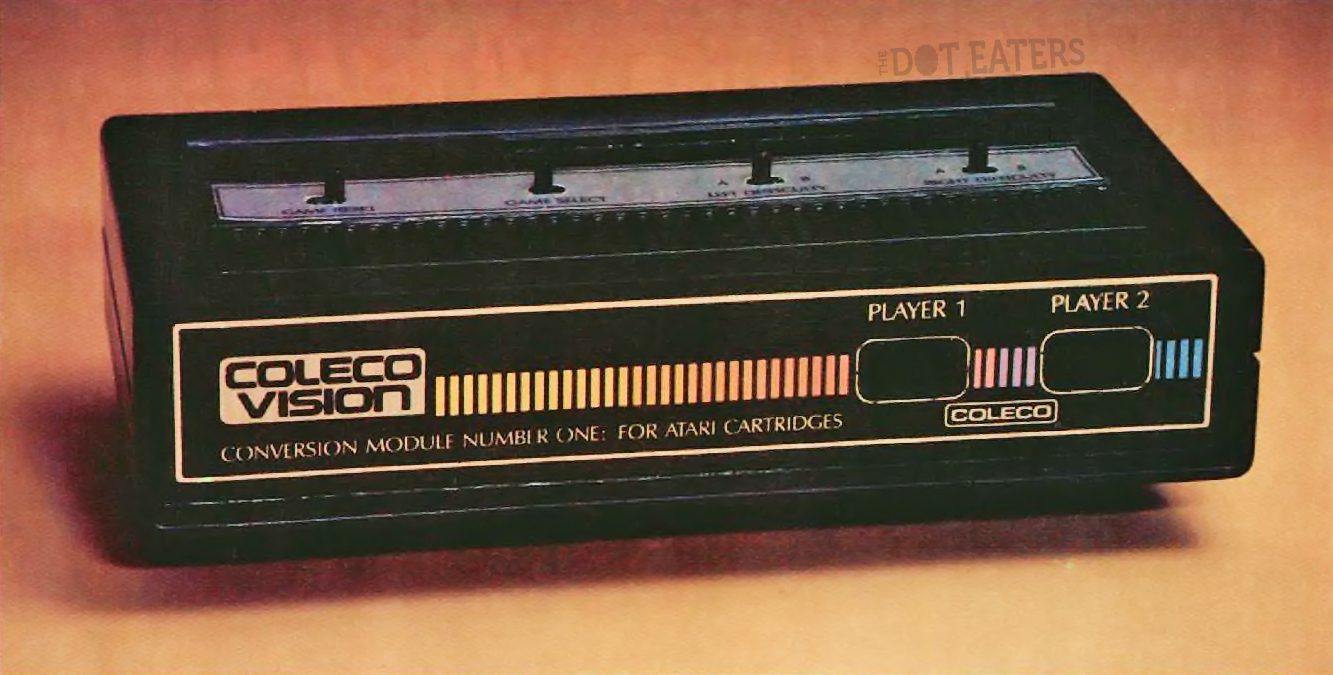





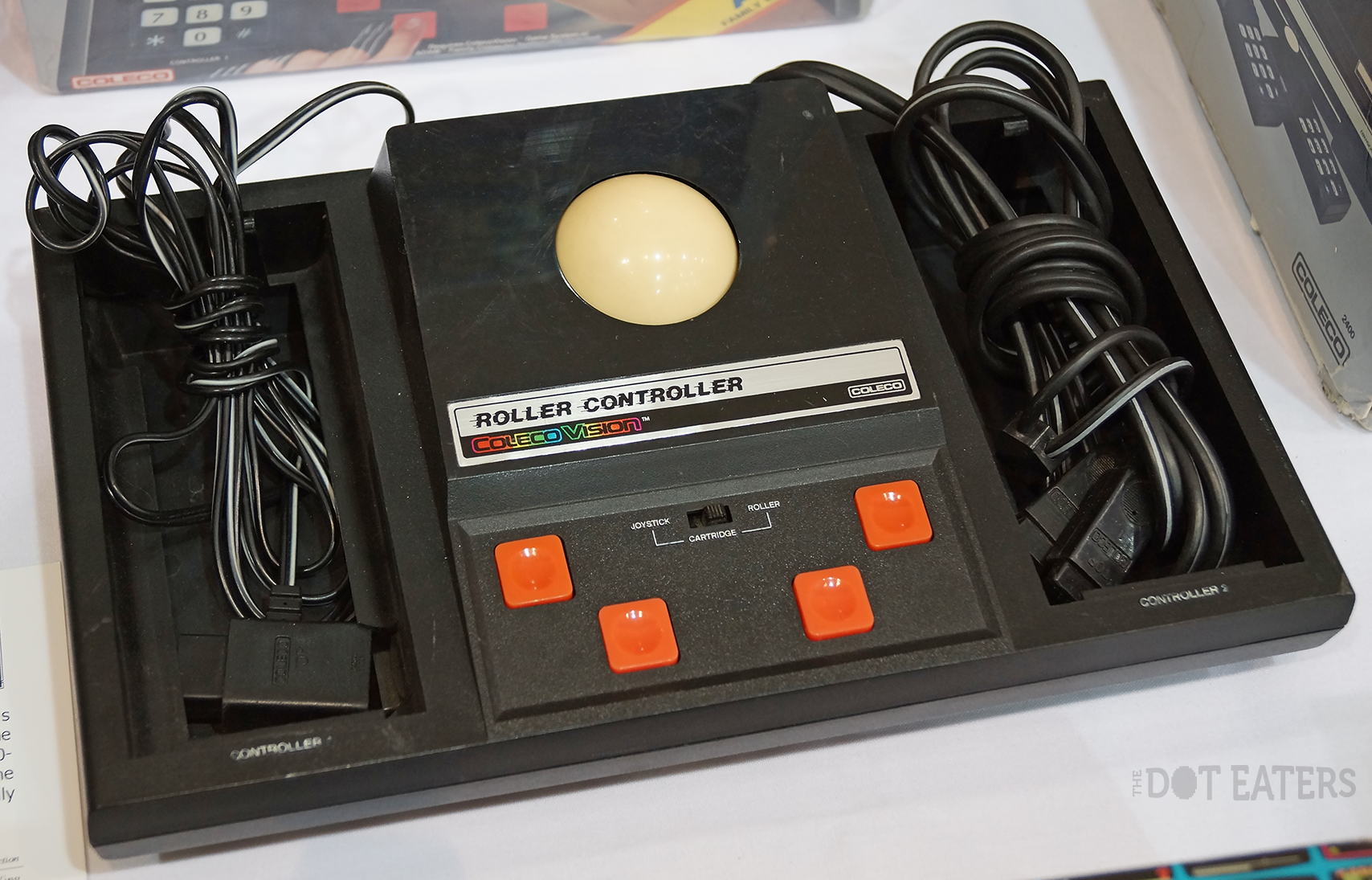
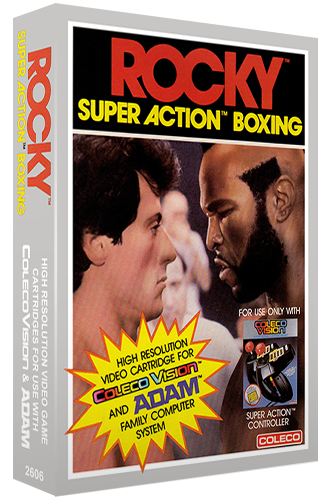

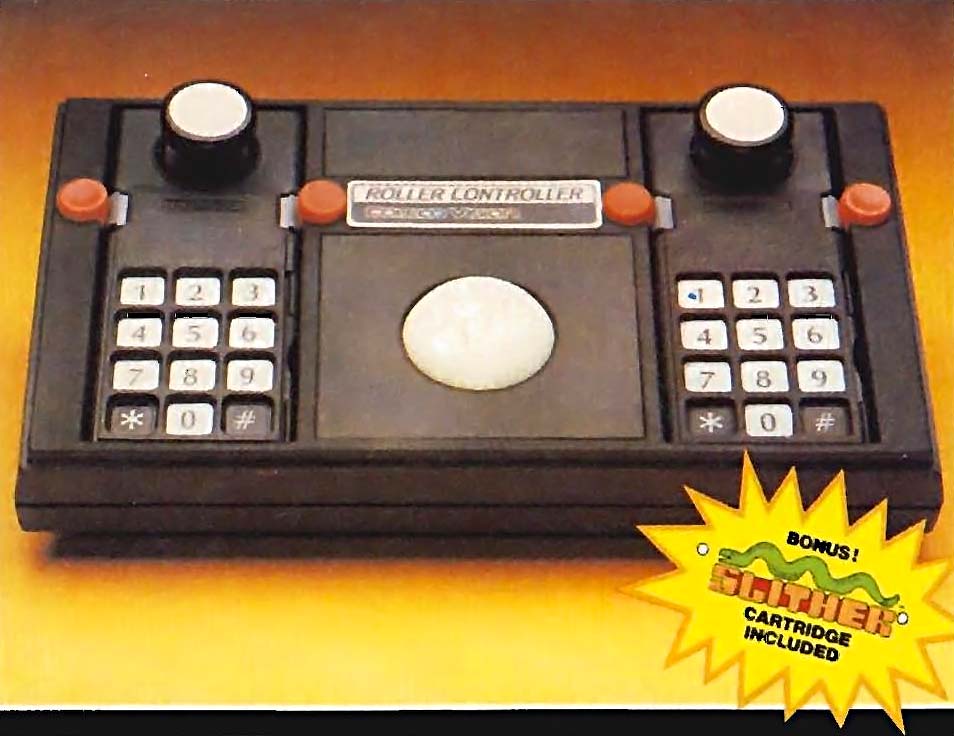
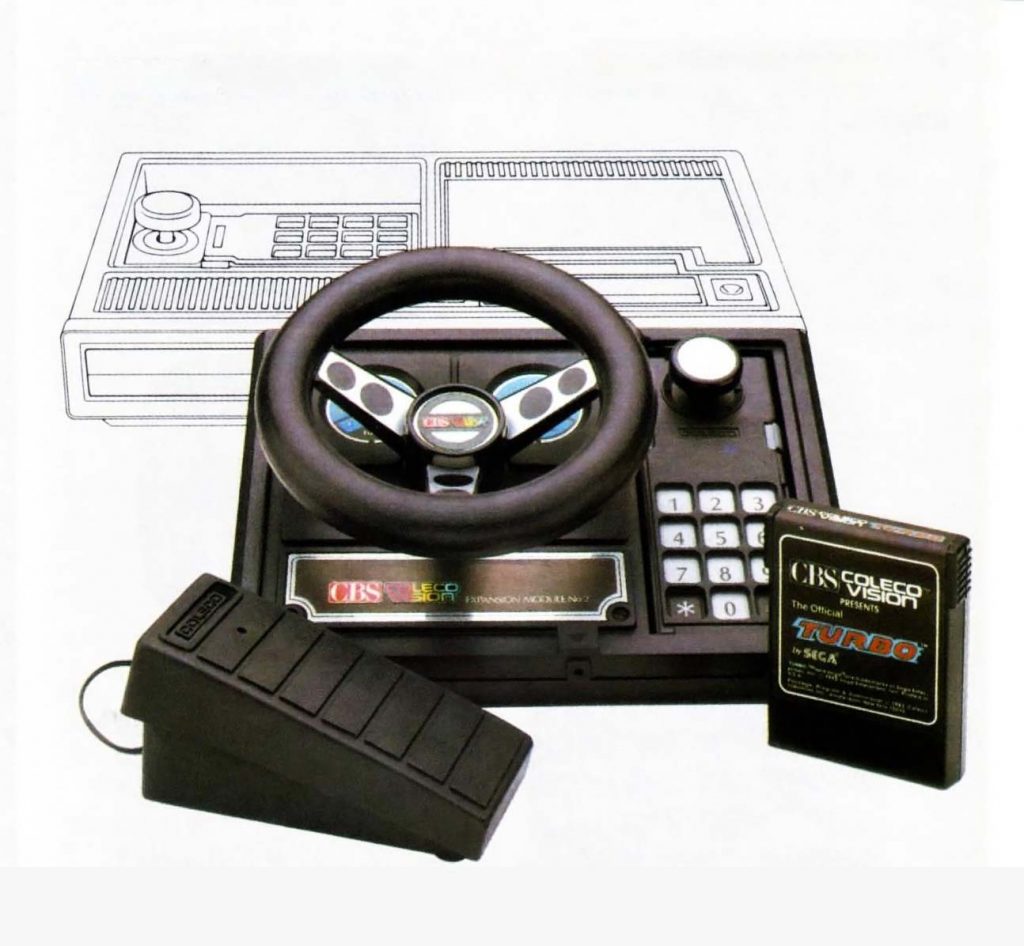





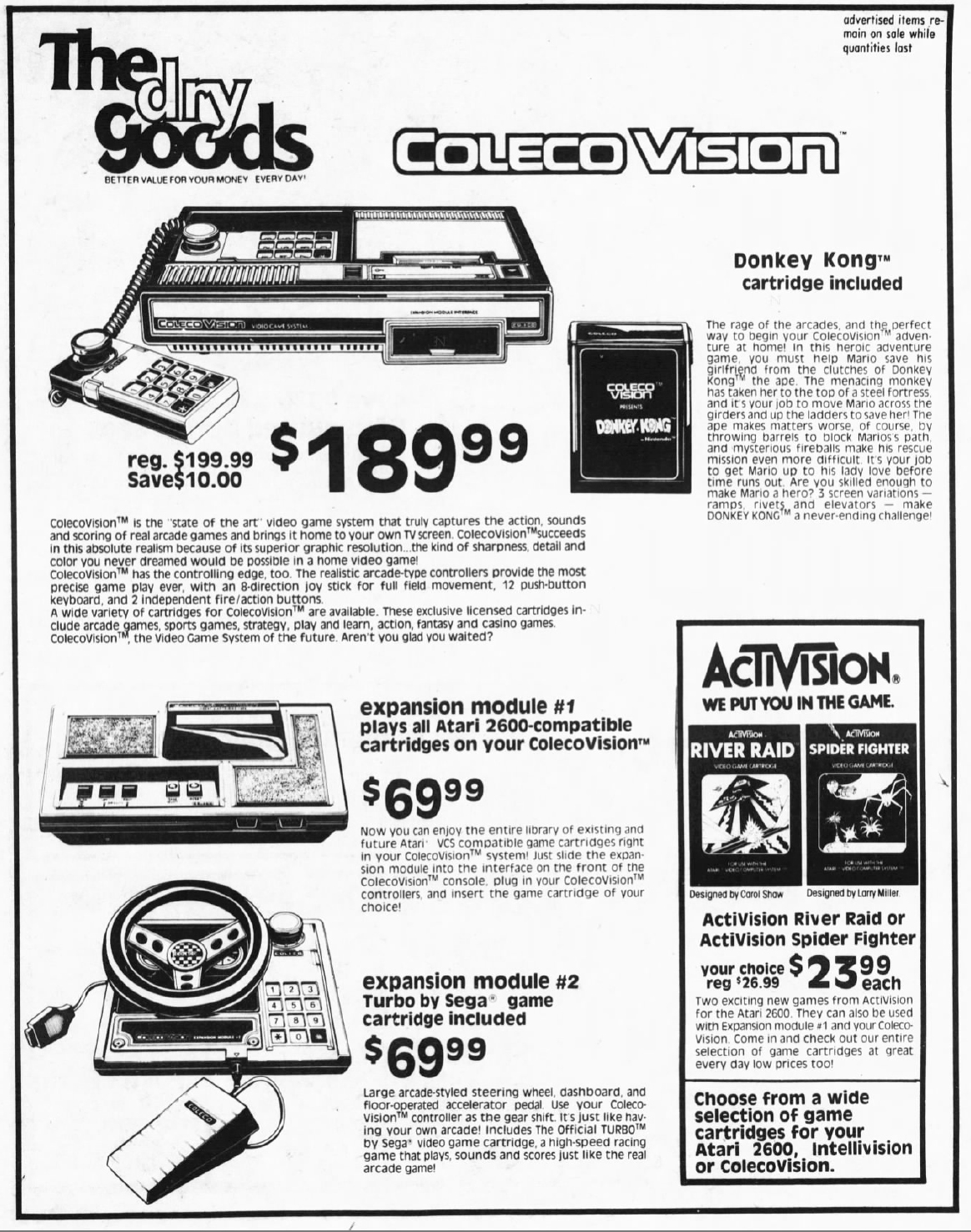
Excellent article. Just discovered your website and thoroughly enjoying it.
Great, thanks! Keep reading and commenting!
What an excellent article. This in one of the few write-ups that really gives readers a sense of what it was like when the ColecoVision was released. You captured it really well. I know, because I got one of these amazing machines when it was first released (thanks Dad).
Yeah, the ColecoVision was quite the machine. I seem to recall playing it so much that I wore out my tendons. The time away from the machine while healing was tough. Later I noticed Nintendo gamers coined the phrase “Nintendo thumb”. I totally understood what they were talking about.
For those that have never tried a ColecoVision, your best bet is the stuff they ported over in-house (as opposed to a lot of the 3rd-party games — which usually sucked). So for a list of gooders, check out:
– Donkey Kong Jr. (Super Donkey Kong Jr. includes all levels from the arcade version)
– Frenzy
– Time Pilot
– Venture
– Zaxxon
– Cosmic Avenger
– Q*Bert
Note: This machine is the same spec as the SEGA SG-1000. So for a similar experience, try the following SG-1000 games:
– Galaga
– Golgo 13
– Hustle Chummy
– Star Force
– Elevator Action
– Exerion
Thanks for the kind words about the article.
As noted in the article, I had a ColecoVision myself, and it was nothing short of a spectacular games console. I know exactly what you mean about straining your hands with the stiff mushroom stick, I’m sure it put a lot of kids’ hands out of commission.
Out of the games you list for CV, Venture and Zaxxon were probably my favourites. I remember really liking Mousetrap too, it was a nice strategic take on all the Pac-Man games that were out at the time. And of course, the Donkey Kong game that came packed with the system was a revelation.
Thanks again for writing!
If you look around you will see people having less time today. So filling the limited spare time with a quick game is what happened (for example during public transport, in a break etc.). You do not have a full blown console with you but you still carry a smartphone or tablet with you… that’s the big difference. I have plenty of games at home for all kind of current consoles but there are a lot I never played and they are still in original cover due to time issues. Last time I want to play with my girlfriend on my PS3 the update of the console itself and the game took 45 minutes alone (!!!). Well not so tell we waited a while and then switching over to watch a movie ;-(
Great article showing the spirit of these consoles. Today Coleco, Intellivison and Atari still have plenty of fans supporting these systems. As old tv’s fade away and people are surrounded by hightech gadgets these old consoles are still attractive if updated: Stereo/Surround sound, AV/Composite video output are state of the art creating new game experience even with old games. If you hear the stereo/surround sound from such an old console you are really surprised how great these games are.
Specially as modern consoles sucks in gameplay and complexity (today you need about 15-30 minute to get warm or update your PS3/P4) quick and easy games are really a runner (for the masses on smartphones/tables). So we may see the dying of dedicated gaming consoles very soon, still living on tables and phones.
I think the latest consoles that were just released as I am writing this, the Xbox One and PS4, really mitigate the issues with long start-up times and having to constantly update them. They have systems in place, such as background updating, that put an end to this kind of thing.
Mobile gaming has certainly come to the fore recently, but I don’t think it will be replacing dedicated game consoles quite yet.